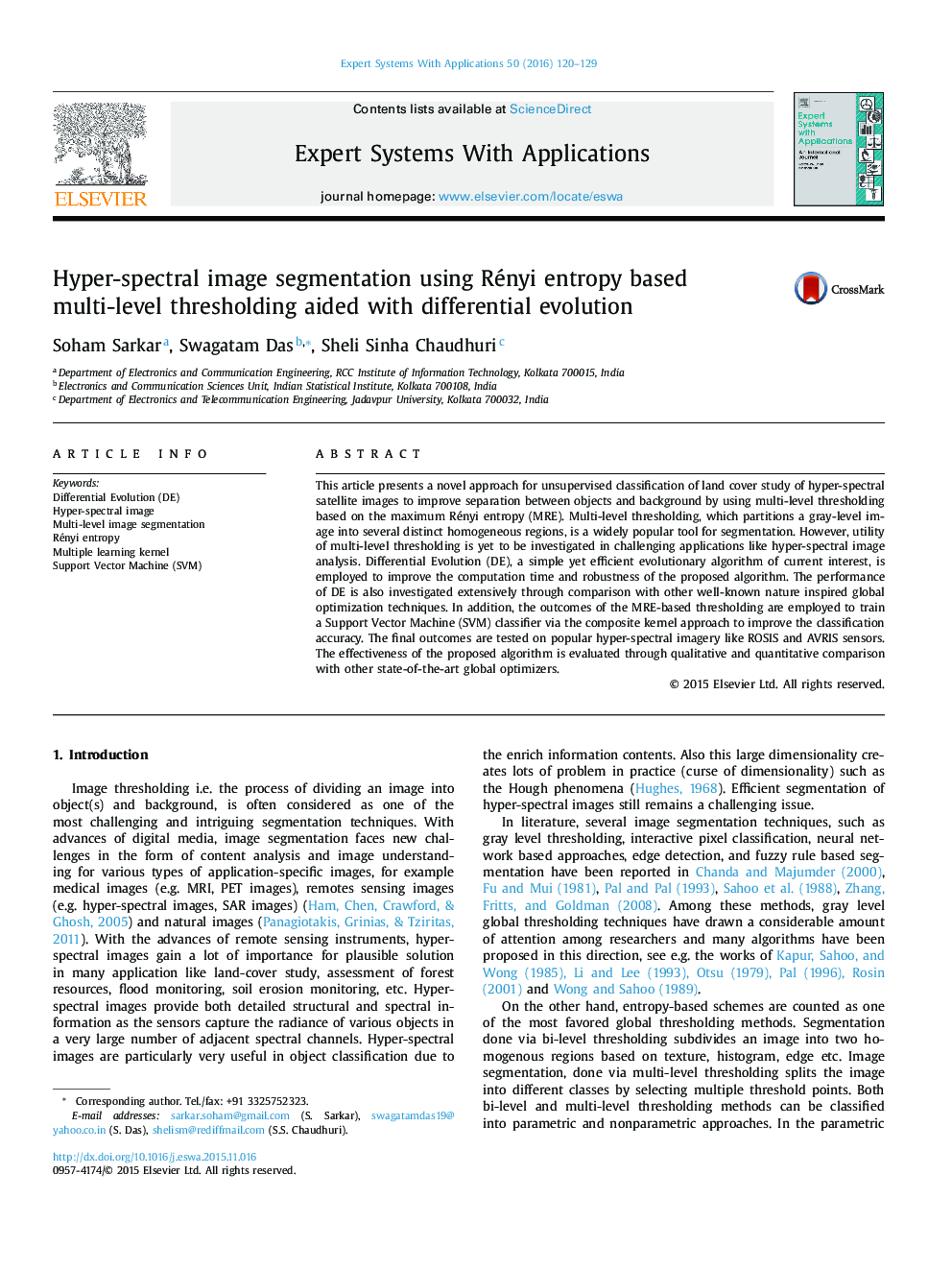| کد مقاله | کد نشریه | سال انتشار | مقاله انگلیسی | نسخه تمام متن |
|---|---|---|---|---|
| 382014 | 660722 | 2016 | 10 صفحه PDF | دانلود رایگان |
• Unsupervised classification of land cover study of hyper-spectral satellite images.
• A multi-level Rényi entropy based image thresholding scheme is presented.
• Multi-level thresholding is formulated as optimization problem and solved with DE.
• Composite kernel based classification approach using Support Vector Machine (SVM).
• Very competitive performance on popular hyper-spectral imagery like ROSIS and AVRIS.
This article presents a novel approach for unsupervised classification of land cover study of hyper-spectral satellite images to improve separation between objects and background by using multi-level thresholding based on the maximum Rényi entropy (MRE). Multi-level thresholding, which partitions a gray-level image into several distinct homogeneous regions, is a widely popular tool for segmentation. However, utility of multi-level thresholding is yet to be investigated in challenging applications like hyper-spectral image analysis. Differential Evolution (DE), a simple yet efficient evolutionary algorithm of current interest, is employed to improve the computation time and robustness of the proposed algorithm. The performance of DE is also investigated extensively through comparison with other well-known nature inspired global optimization techniques. In addition, the outcomes of the MRE-based thresholding are employed to train a Support Vector Machine (SVM) classifier via the composite kernel approach to improve the classification accuracy. The final outcomes are tested on popular hyper-spectral imagery like ROSIS and AVRIS sensors. The effectiveness of the proposed algorithm is evaluated through qualitative and quantitative comparison with other state-of-the-art global optimizers.
Journal: Expert Systems with Applications - Volume 50, 15 May 2016, Pages 120–129
